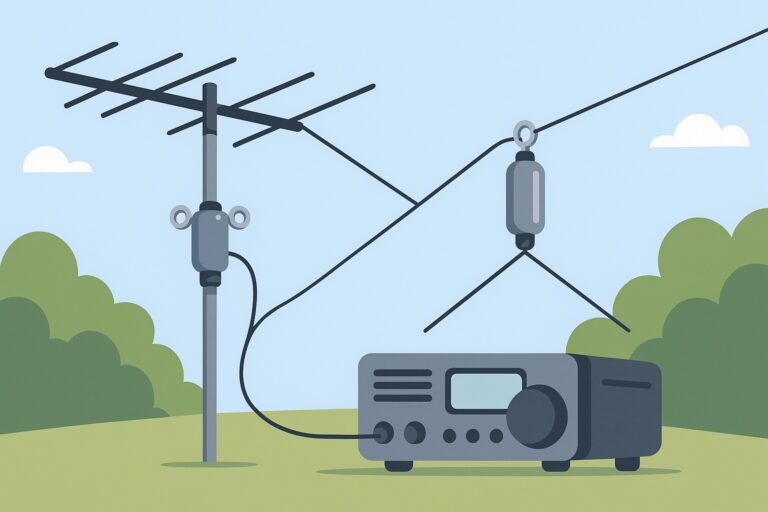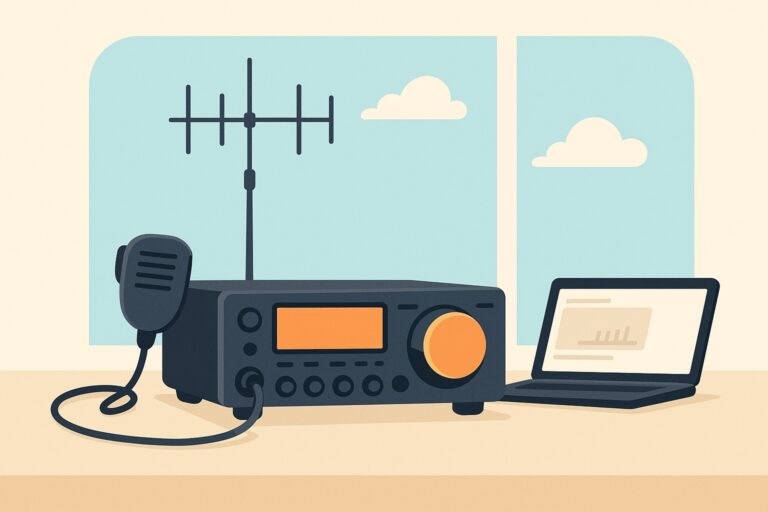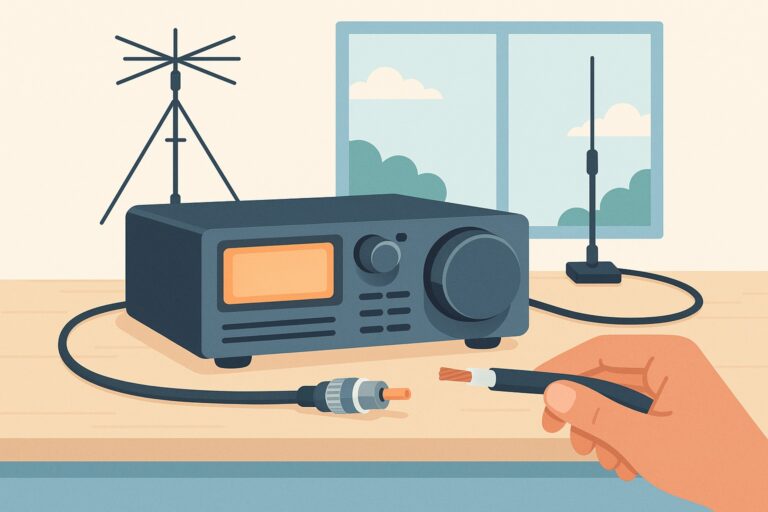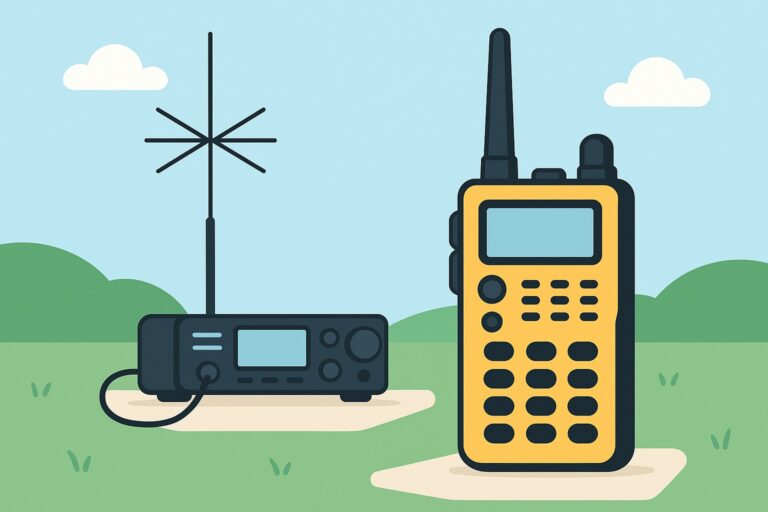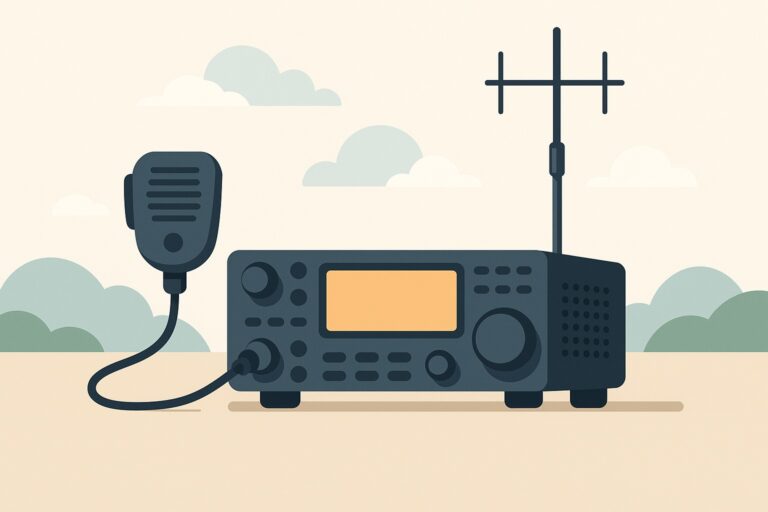The Ultimate Guide to Ham Radio Repeaters: Tips & Tricks
Ham radio repeaters are one of the most powerful tools available to amateur radio operators. Whether you’re looking to extend your communication range, participate in emergency nets, or simply enjoy clear conversations with fellow hams, understanding how repeaters work—and how to use them effectively—can transform your on-air experience. In this ultimate guide, we’ll cover everything you need to know about ham radio repeaters, from basic operation to advanced tips and tricks, helping you get the most out of every transmission.
The Ultimate Guide to Ham Radio Repeaters: Tips & Tricks
Introduction to Ham Radio Repeaters
Ham radio repeaters are specialized radio stations that receive signals on one frequency and retransmit them on another, often at higher power and from an elevated location. This basic function allows amateur radio operators to communicate over much greater distances than would be possible with just handheld or mobile radios. Repeaters play a crucial role in expanding the reach of ham radio, fostering a sense of community, and supporting emergency communications.
Repeaters are often located on tall buildings, mountaintops, or specially constructed towers. This strategic placement allows their signals to cover a wide geographic area, overcoming the typical line-of-sight limitations of VHF and UHF transmissions. By retransmitting weak or distant signals, repeaters make it possible for operators to communicate across towns, cities, counties, and even further depending on the system’s setup and power.
The popularity of repeaters is evident in the sheer number available to amateur operators. As of 2025, there are more than 20,000 repeaters in the United States alone. This vast network creates countless opportunities for operators to connect, whether they’re traveling, participating in nets, or providing vital communication services during emergencies.
The ARRL Repeater Directory includes 22,319 listings for the US and Canada, organized by state/province, county, and city/town. This comprehensive resource makes it easy for hams to find repeaters wherever they are, ensuring that help and companionship are always within reach.
How Ham Radio Repeaters Work
At its core, a ham radio repeater acts as a relay station. When you transmit your signal to the repeater’s input frequency, the repeater receives it, amplifies it, and simultaneously retransmits it on its output frequency. Most repeaters use a pair of closely spaced frequencies, known as the input and output, which are separated by a standard offset (such as 600 kHz for 2 meters or 5 MHz for 70 centimeters).
Repeaters rely on a device called a duplexer, which allows the repeater to receive and transmit at the same time without interference. This is possible because the input and output frequencies are separated by the offset, and the duplexer filters out any unwanted signals. The result is a smooth, high-quality relay of communications, even when multiple operators are using the same repeater.
Many repeaters also use a tone access system, such as Continuous Tone-Coded Squelch System (CTCSS) or Digital Coded Squelch (DCS), which helps prevent unintentional access and reduces interference. To access the repeater, your radio must transmit the correct tone along with your voice signal. If the repeater doesn’t detect the proper tone, it won’t retransmit your signal.
Modern repeaters are not limited to analog FM voice. The ARRL Repeater Directory includes digital repeaters such as System Fusion, D-STAR®, DMR, NXDN, M17, Tetra, and P25 systems. These digital systems offer advanced features like data transmission, text messaging, and even internet linking, expanding the possibilities of ham radio communication.
Benefits of Using Repeaters
Using repeaters offers numerous advantages for amateur radio operators. The most obvious benefit is the dramatic increase in communication range. With the help of a repeater, even low-power handheld radios can communicate over dozens of miles, overcoming obstacles like buildings, hills, and forests that would otherwise block the signal.
Repeaters also foster a sense of community. Many are managed by local clubs or organizations that schedule regular nets, events, and emergency drills. These gatherings help operators stay connected, practice their skills, and remain prepared for real-world situations.
Another key benefit is the role repeaters play in emergency communications. During disasters, when cell towers and internet infrastructure might fail, repeaters often remain operational thanks to backup power and robust installations. The ARRL Repeater Directory includes information on ARES® and SKYWARN® affiliation, emergency power, and more. This ensures that operators can quickly find repeaters that participate in emergency communication networks, making ham radio a vital asset for public safety.
Some of the primary benefits of using repeaters include:
- Expanded range: Communicate far beyond the limits of your handheld or mobile radio.
- Reliability: Many repeaters are equipped with backup power and are designed to withstand harsh conditions.
- Community engagement: Participate in nets, club meetings, and special events.
- Emergency readiness: Access critical information and coordinate with other operators during disasters.
- Access to digital modes: Explore the latest technologies and features offered by digital repeaters.
With so many benefits, it’s no wonder that repeaters are considered an essential part of the ham radio landscape. The ARRL Repeater Directory is now powered by RepeaterBook, amateur radio’s comprehensive, worldwide, free repeater database, making it easier than ever to locate and utilize repeaters wherever you go.
Setting Up and Accessing Repeaters
Getting started with repeaters is easier than you might think, but it does require some understanding of your radio’s functions and a bit of planning. The first step is to identify which repeaters are available in your area. The ARRL Repeater Directory is an invaluable resource, providing detailed listings for thousands of repeaters, including their frequencies, offsets, access tones, and special features.
When you find a repeater you’d like to use, program its output frequency, offset, and any required access tones into your radio. Most modern transceivers make this process straightforward, allowing you to save repeater channels for quick access. Be sure to double-check the repeater’s settings, including whether it supports analog or digital modes, to avoid compatibility issues.
Before transmitting, always listen to the repeater for a few moments to ensure you’re not interrupting an ongoing conversation or net. When you’re ready, key your microphone and announce your callsign, then wait for a response. Proper repeater etiquette is important; keep transmissions brief, leave pauses for others to join, and avoid monopolizing the frequency.
Some operators set up their own repeaters, especially in underserved areas or for specific events. This process involves selecting a suitable site, obtaining the necessary equipment (such as a repeater controller, duplexer, and antennas), and following local licensing and coordination requirements. For most hams, however, simply accessing public repeaters is the easiest way to get started and connect with others.
If you need help with programming or locating a repeater, there are excellent resources available—including https://hamradioplayground.com, where you’ll find guides, tutorials, and community forums dedicated to making repeater operation accessible to all.
Advanced Tips and Tricks for Repeater Use
Once you’re comfortable with basic repeater operations, there are several advanced techniques and best practices that can help you get even more from your experience. Mastering these tips will make you a more effective and courteous operator, whether you’re participating in daily nets or handling emergency traffic.
- Learn the local protocols: Every repeater community has its own customs. Take time to listen and observe before jumping in, and always follow established net procedures or operating guidelines.
- Use time-out timers wisely: Most repeaters have a time-out timer to prevent accidental “stuck microphone” situations. Keep your transmissions concise and leave gaps between transmissions to allow others to break in.
- Experiment with digital modes: Modern repeaters support a range of digital technologies. Try out DMR, D-STAR, System Fusion, or other modes to access additional features like text messaging, GPS location sharing, and internet linking.
- Take advantage of linked repeater systems: Some networks link multiple repeaters together, allowing communications across cities, states, and even internationally. Explore these networks to expand your reach and meet new operators.
- Monitor for emergency nets: Many repeaters are affiliated with emergency services or weather reporting networks. Know which repeaters participate in ARES®, SKYWARN®, or other emergency nets, and be prepared to assist when needed.
- Stay updated with directories: The ARRL Repeater Directory is updated regularly, and because the ARRL Repeater Directory is now powered by RepeaterBook, amateur radio’s comprehensive, worldwide, free repeater database, you’ll have the most current information at your fingertips.
- Respect emergency and priority traffic: During drills or real emergencies, always yield to priority communications and follow the instructions of net control operators.
Finally, consider deepening your knowledge by participating in repeater maintenance, joining a local club, or even building your own repeater system. The more you learn, the more you’ll appreciate the technology and community that make ham radio such a rewarding hobby.
With these tips and tricks, you’ll be well equipped to enjoy the full potential of ham radio repeaters, ensuring clear, reliable communication and lasting friendships on the airwaves.


